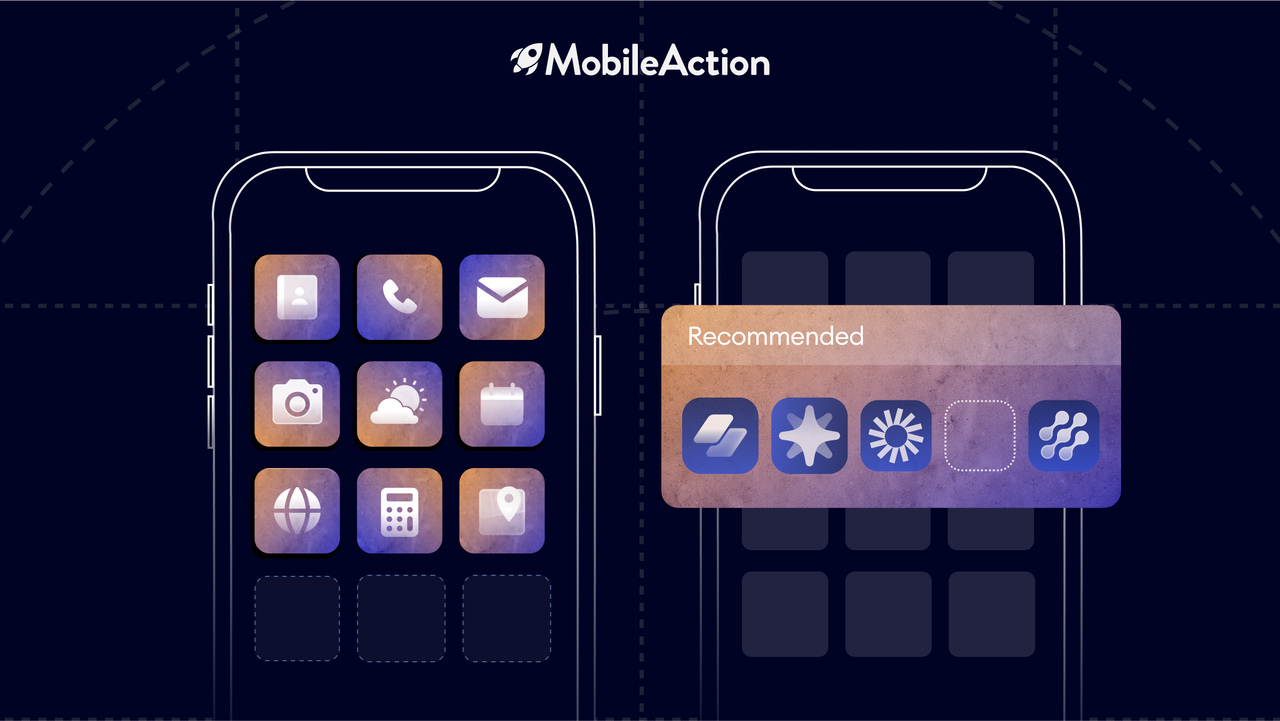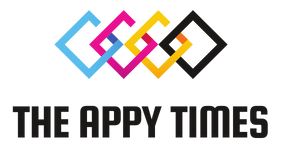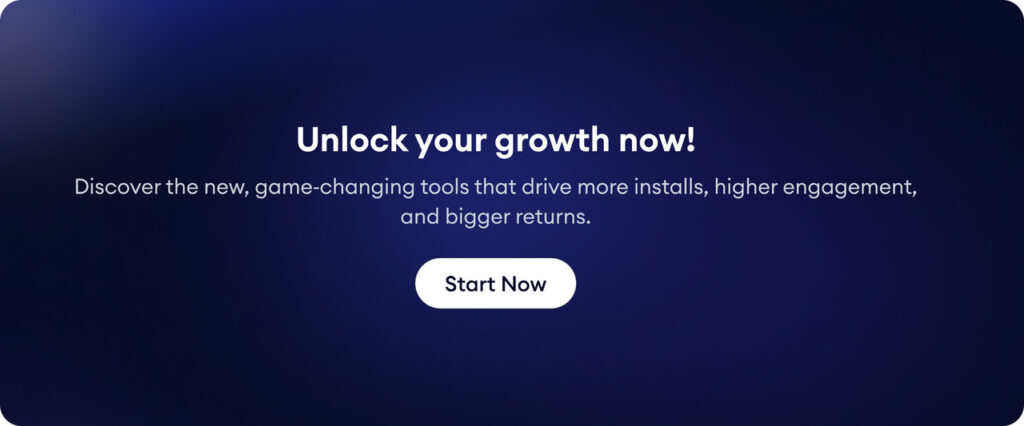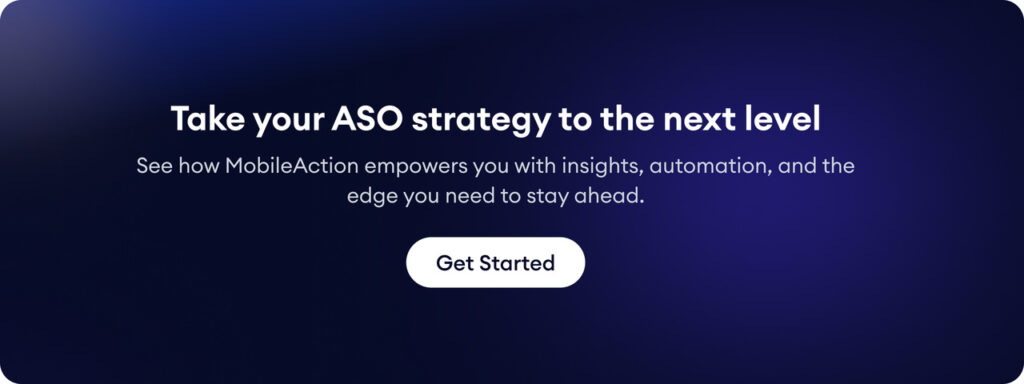Cellular app advertising is continually evolving, and consumer acquisition channels that labored just a few years in the past are more and more aggressive.
Authentic Tools Producer (OEM) promoting has emerged as a strong channel in cell advertising, permitting app builders and advertisers to achieve customers straight by smartphone producers and carriers.
By 2025, OEM promoting is transferring into the mainstream of consumer acquisition methods.
This weblog put up will clarify intimately what OEM promoting is, the way it works for cell apps, and why it’s an efficient channel to incorporate in your advertising combine in 2025 – with information and examples as an instance its affect.
What Is OEM Promoting in cell advertising?
Within the context of cell advertising, OEM promoting refers to promotional campaigns run by partnerships with system producers (and generally cell carriers) to position apps and adverts straight on smartphones.
As an alternative of exhibiting adverts solely inside third-party apps or on social media, OEM promoting leverages the cellphone’s built-in software program and setup course of. For instance, an app would possibly come pre-installed on a brand new Android system or be really helpful to the consumer through the cellphone’s preliminary setup.
OEM promoting is usually an Android-centric technique (since Android OEMs like Samsung, Xiaomi, Oppo, and so forth. permit such placements), and it’s usually not obtainable on the closed iOS ecosystem.
In easy phrases, OEM promoting lets app entrepreneurs work with smartphone makers or their affiliate networks to get their app in entrance of customers as a part of the system expertise, fairly than relying solely on conventional app retailer listings or adverts on exterior platforms.
How OEM Promoting works on cell units

OEM promoting can take just a few completely different varieties on cell units, all geared toward integrating your app’s promotion into the consumer’s system expertise. Widespread OEM promoting channels and codecs embody:
-
Pre-loaded apps or “Preloads”
Your app is put in (or queued for set up) on the system out-of-the-box or through the system’s setup wizard. This generally is a static preload (the app is current on each system by default) or a dynamic preload (the consumer is obtainable a number of apps to put in based mostly on their profile or area throughout setup).
As an illustration, a brand new cellphone could present an inventory of prompt apps (information, video games, utilities, and so forth.) for the consumer to tick and set up through the preliminary configuration – apps on this listing have paid for that privileged placement.
Many Android OEMs function their very own app shops (e.g. Samsung Galaxy Retailer, Huawei AppGallery, Xiaomi GetApps). OEM promoting permits apps to be featured prominently in these shops – akin to on the homepage, in really helpful sections, or by way of banner adverts – rising visibility outdoors of Google Play.
On condition that various OEM app shops are anticipated to account for about 25% of world app downloads by 2025, these placements can drive important downloads.
-
On-device suggestions and widgets
OEMs usually embody customized consumer interface components that recommend content material. This could be a “Really helpful Apps” folder or widget on the house display screen, a pre-installed information feed app that exhibits prompt app adverts, or push notifications despatched by the OEM with app ideas.
These are native placements throughout the system UI the place an advertiser’s app can seem as a prompt obtain. The important thing benefit is that the suggestion appears like a part of the cellphone’s system, not a third-party advert.
In some circumstances, cell carriers (like Verizon, AT&T, or worldwide operators) associate in OEM promoting. They might embody sponsored apps throughout system activation or in carrier-branded app portals.
That is much like OEM placements and infrequently grouped along with OEM promoting, extending attain to units bought by these carriers.
OEM Promoting vs. Conventional Cellular UA Channels
How does OEM promoting differ from extra conventional consumer acquisition (UA) channels like social media adverts, search adverts, or app retailer search optimization?
The desk under highlights some key variations between OEM promoting and traditional cell promoting:
| Facet | OEM Promoting (On-Gadget OEM Channels) | Conventional Cellular Promoting (Social, Search, and so forth.) |
| Platform Protection | Primarily Android (by way of OEMs and service offers); minimal/no direct iOS choices. | Android and iOS (by way of Google Play, Apple App Retailer, Fb/Google Adverts, and so forth.). |
| Advert Integration | Native to system (pre-installed apps, setup screens, OEM app retailer listings, dwelling display screen widgets). Appears like a part of the cellphone’s interface. | Exterior to system UI (adverts in different apps, cell web sites, or app retailer sponsored slots). Typically redirects consumer to app retailer for set up. |
| Consumer Touchpoint | Proven at pivotal system moments – e.g. first time system is turned on, inside built-in menus, or as system notifications throughout cellphone use. | Proven when consumer is looking third-party apps or web sites (e.g. in a feed, watching a video, or looking the app retailer). Requires consumer to click on an advert and go to the shop. |
| Concentrating on Knowledge | Concentrating on based mostly on system information and OEM’s first-party information (system mannequin, OS model, area, service, and in some circumstances demographic information from system setup). | Concentrating on based mostly on advert community information (consumer pursuits, conduct, key phrases, demographics) and platform accounts (e.g. Fb/Google profiles). |
| Price Mannequin | Typically cost-per-install or flat price per preload. Some OEM campaigns use value per preload (pay provided that the consumer opens or installs the app). May end up in decrease efficient CPI resulting from much less competitors. | Typically cost-per-click or per impression bidding (Fb Adverts, Google UAC). Advertiser pays for visitors which will or could not convert, and CPI is set by conversion charges and bid costs in a aggressive public sale. |
| Benefits | – Native consumer expertise: Adverts really feel like a part of system, not intrusive. – Decrease competitors: Fewer advertisers use OEM channels, so advert stock prices (CPM/CPC) are sometimes decrease- Excessive intent customers: Reaching customers throughout new system setup or when they’re exploring their cellphone means they’re open to making an attempt new apps. – Low fraud threat: Troublesome for fraudsters to faux device-level placements, leading to cleaner visitors. |
– Extensive attain: Entry to massive established consumer bases on common platforms (Fb, Google, TikTok, and so forth.) together with iOS customers. – Mature instruments: Wealthy inventive codecs (video, playable adverts) and sturdy optimization algorithms for concentrating on. – Flexibility: Can quickly flip campaigns on/off and alter concentrating on or bids in real-time self-serve dashboards. |
| Limitations | – Android-centric: Little to no protection of iPhone customers. – Fragmentation: Working with a number of OEMs (Samsung, Xiaomi, Oppo, and so forth.) and carriers could be complicated, every with its personal platform and necessities. – Entry: Typically requires partnerships or intermediaries to purchase OEM stock (not at all times so simple as logging into an advert platform). |
– Excessive competitors: Common channels are crowded, driving up prices for impressions and installs. – Advert fatigue: Customers could ignore or mistrust apparent adverts on social media or internet. – Fraud dangers: Prone to put in fraud, click on spamming, bots in open advert networks, requiring anti-fraud measures. |
As proven above, OEM promoting is complementary to conventional channels. It gives a extra built-in consumer expertise (because the app promotion is embedded within the system itself) and infrequently yields environment friendly outcomes when it comes to value per set up.
Actually, OEM campaigns are inclined to have decrease cost-per-mille and cost-per-click than commonplace channels, permitting entrepreneurs to achieve extra customers for a similar funds.
Alternatively, conventional channels nonetheless provide cross-platform attain (together with iOS customers) and ease of entry that OEM channels could lack. A well-rounded consumer acquisition technique in 2025 usually entails utilizing OEM promoting alongside different channels to maximise general attain and effectivity.
Advantages of OEM Promoting for cell apps in 2025
Why ought to app builders, cell advertisers, and businesses pay shut consideration to OEM promoting in 2025? Listed below are some key advantages and causes backed by current information:
-
Price-effective consumer acquisition & greater ROI
One of many greatest benefits of OEM promoting is its cost-efficiency. As a result of these placements face much less competitors and goal customers on the superb second (like when organising a brand new cellphone), they usually ship installs at a decrease value than conventional adverts.
For instance, apps working campaigns by way of OEM and service channels in 2023 noticed a few 30% decrease value per acquisition (CPA) in comparison with these relying solely on conventional app retailer advertising.
Moreover, entrepreneurs report greater return on advert spend – OEM campaigns can obtain a better ROAS than typical cell advert platforms by reaching an energetic consumer base with minimal waste. Briefly, OEM promoting can stretch your funds additional, yielding extra installs or conversions for a similar spend.
-
Excessive-High quality customers with higher engagement
OEM-sourced customers usually present robust engagement and retention. When an app is introduced as a part of the system (preloaded or really helpful in a local manner), customers usually tend to give it a try to maintain utilizing it.
Research have discovered that apps pre-installed by way of OEM channels are inclined to have greater retention charges and long-term utilization in comparison with apps acquired by way of commonplace adverts.
The native really feel of OEM placements makes the app appear extra reliable and built-in, resulting in improved conversion from set up to energetic consumer and a better lifetime worth (LTV) per consumer.
Actually, some OEM campaigns see conversion charges (set up price from impressions) that may attain practically 90% in optimum situations – a very excessive determine reflecting how efficient a well-placed suggestion on a tool could be at driving precise installs.
Entry to untapped audiences & world attain
OEM promoting lets you attain audiences that could be missed by standard channels. As smartphone progress continues in rising markets, many new customers are coming on-line primarily by way of Android units from OEMs past the Google Play ecosystem.
OEM partnerships present direct entry to those untapped customers. For instance, in sure fast-growing markets in Jap Europe, about 40% of app installs are actually pushed by OEM channels fairly than the official app shops. Extra OEMs (particularly in Asia, the Center East, and Latin America) are opening their units to promoting, which implies app entrepreneurs can faucet into thousands and thousands of recent customers this manner.
By 2024, it’s projected that over 2 billion cell units globally might be reached by way of OEM and service promoting channels. For app builders, this can be a big viewers pool that extends past the acquainted Google and Fb advert networks.
Premium placements and device-level concentrating on
OEM promoting can ship your app to premium customers and area of interest segments with precision. As an illustration, you may goal by particular system fashions or tiers – e.g. exhibiting your app on high-end Samsung or Huawei units in case your product is geared towards high-spending customers. These customers usually have extra buying energy and usually tend to make in-app purchases or subscriptions.
Furthermore, OEM channels leverage first-party system information to personalize app ideas. A cellphone producer or service is aware of particulars just like the consumer’s system sort, area, possibly even age vary (from account setup), which can be utilized to suggest apps that match the consumer profile. This device-level concentrating on means OEM adverts can obtain very related placements – for instance, recommending a finance app to a consumer who simply indicated an curiosity in finance throughout cellphone setup.
The result’s considerably greater conversion charges than broad, one-size-fits-all campaigns. In a single case research, an OEM marketing campaign greater than doubled an app’s conversion price from 4.45% to 9.05%, whereas additionally bettering value per set up, in comparison with standard channels.
Fraud discount and clear visitors
Cellular advert fraud is a priority in lots of consumer acquisition campaigns (faux clicks, bots, fraudulent installs driving up prices). OEM promoting presents a extra fraud-resistant surroundings.
For the reason that app promotions happen in a managed system setup or OEM retailer context, it’s far tougher for dangerous actors to simulate faux installs or clicks. The installs you get by way of OEM channels are real customers on actual units, as a result of there isn’t an open advert trade within the center. In accordance with business insights, OEM sources present excessive transparency and are basically fraud-free.
This implies your advert spend isn’t being wasted on faux customers – bettering the standard of acquired customers and the accuracy of your marketing campaign efficiency information.
Entrepreneurs have noticed that OEM campaigns ship “clear” installs with minimal fraud, not like some third-party advert networks which could require extra fraud detection instruments.
OEM promoting traits in 2025
The rise of OEM promoting is among the notable cell advertising traits heading into 2025. Main business predictions and present information point out that this channel is quickly turning into a staple for app progress:
-
Widespread adoption by entrepreneurs
Extra app entrepreneurs are incorporating OEM channels into their acquisition combine. By 2024, an estimated 60% of cell app advertisers will embody OEM advertising as a core a part of their UA technique (up from 45% in 2023).
Companies and consumer acquisition groups have began to construct experience round OEM placements as this strategy proves its worth.
-
Rising share of app distribution
With conventional app shops reaching saturation, OEM and third-party app shops are capturing a much bigger slice of app downloads. It’s anticipated that by 2025, OEM-operated app shops (from producers like Samsung, Huawei, Xiaomi, and so forth.) will account for roughly 25% of world app downloads.
This signifies an enormous shift in how customers uncover apps, with on-device suggestions rivaling the likes of Google Play in some areas.
-
Greater efficiency metrics
The efficiency outcomes from OEM promoting are encouraging. Business studies venture that OEM campaigns will ship round 40% greater return on advert spend (ROAS) by 2025 in comparison with commonplace cell promoting strategies.
Apps featured as preloads or device-native suggestions additionally see considerably greater set up conversion charges – probably 3× greater set up charges than these from typical digital advertising channels.
These enhancements in effectivity and scale make OEM channels very enticing, particularly for apps aiming to scale globally.
-
Innovation in OEM advert tech
The OEM promoting ecosystem can be evolving. We’re seeing progress in middleman platforms and DSPs that make it simpler to purchase OEM stock programmatically, in addition to improved measurement and attribution for on-device installs.
OEMs themselves are enhancing their choices – for instance, introducing dynamic preload expertise the place the apps put in on a cellphone can differ based mostly on the consumer’s demographic or pursuits.
This dynamic strategy, anticipated to be commonplace by 2025, permits extremely focused app distribution and is predicted to spice up consumer engagement by round 20% for apps using it.
As well as, OEM channels are integrating higher analytics and AI for concentrating on, which is able to additional enhance marketing campaign efficiency and precision concentrating on.
The underside line
OEM promoting has matured right into a dependable and efficient channel for cell app consumer acquisition as we step into 2025.
By partnering straight with smartphone producers or their promoting companions, app entrepreneurs can safe prime actual property on the system – reaching customers on the very moments they arrange and begin utilizing their telephones.
This on-device presence interprets to decrease acquisition prices, greater high quality customers, and entry to markets that conventional channels would possibly miss. The info from current years backs it up: OEM campaigns can drive down CPA, increase ROI, and considerably improve set up charges.
For app builders, cell advertisers, and businesses seeking to keep forward in a aggressive panorama, OEM promoting presents a compelling aggressive edge. It helps you to faucet into billions of Android customers globally with customized, native-feeling app suggestions that customers belief.
Whereas it shouldn’t fully exchange your different advertising channels, integrating OEM promoting into your 2025 UA technique generally is a sensible transfer to diversify and scale your consumer base. In a cell ecosystem the place each set up counts, OEM promoting is proving to be a strong ally for sustained app progress.




